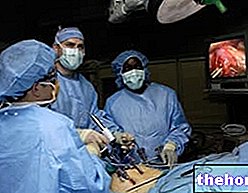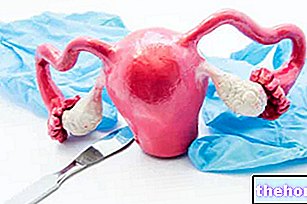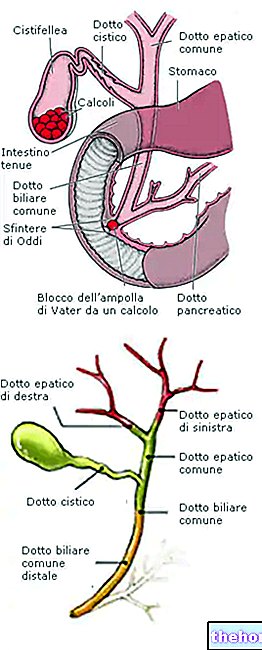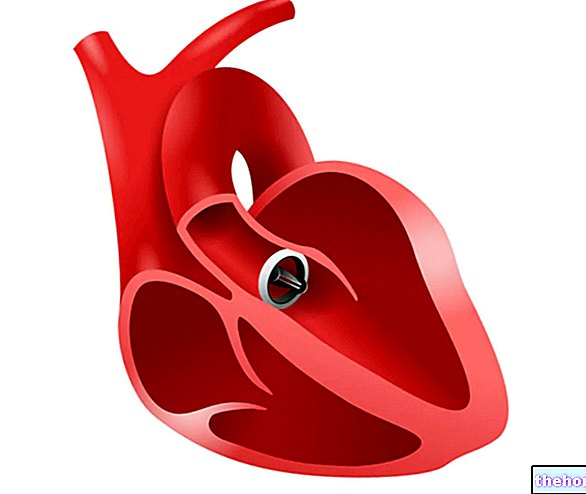Vaginoplasty requires special preparation, which includes a series of pre-operative examinations and some precautions such as, for example, fasting for at least 8 hours on the day intended for surgery.
There are various surgical techniques to perform vaginoplasty; the choice of the surgical technique depends on the purpose of the intervention, so it is not the result of chance.
Vaginoplasty is a substantially safe procedure, which only in rare cases is associated with adverse effects or complications.
Currently, thanks to advances in surgery, vaginoplasty ensures good results.
Brief review of the Vagina
The vagina is the fibro-muscular channel that connects the uterus with the outside. To be precise, it is in connection with the uterine cervix, which represents the lower portion of the uterus.
From a functional point of view, the vagina is the anatomical area responsible for hosting the male sperm after ejaculation, on the occasion of sexual intercourse.

- To remedy the so-called post-partum laxity of the vagina, a condition that affects the tone of the vaginal muscles and can have repercussions on a woman's sexual life;
- Repair the vagina after severe trauma or injury to her. The repair of the vagina that has suffered trauma or injury can include, as in the case of the correction of congenital defects, the transplantation of homologous tissue or the grafting of prosthetic material;
- Building a vagina when absent due to agenesis. Agenesis is the medical term that describes the complete absence of an organ, following an error during embryonic development;
- Correct vaginal hypoplasia resulting from Müllerian agenesis. By the "expression" Müllerian agenesis ", doctors mean a congenital condition characterized by the" absence of the uterus "and by the more or less severe malformation of the vagina;
- Treat episodes of cystocele or rectocele. Cystocele and rectocele are two medical conditions involving the vagina. In fact, the first corresponds to the sliding of the bladder from its natural location in the direction of the vagina, while the second corresponds to the sliding of the rectum from its natural position in the direction of the vagina.
Vaginoplasty performed on the occasion of a cystocele or rectocele may include transplantation of homologous tissue or grafting of prosthetic material; - Building a vagina in men who want to change sex or in people with some intersex condition. Individuals with intersex are people whose sex it is impossible to define and who could, depending on the therapy adopted, become male or female.
The most classic example of an intersex condition is the so-called Morris syndrome (or androgen insensitivity syndrome).
Did you know that ...
In vaginoplasty interventions in which homologous tissue transplantation is envisaged, the latter may come from another part of the same patient's body (autologous transplant) or from another person (allogeneic transplant).
and urine. They are used to assess the general health of the possible patient, as well as his suitability for surgical procedures.
- Pharmacological therapies in progress. During an operation such as vaginoplasty, all those pharmacological therapies that alter the normal coagulation process (aspirin, warfarin, etc.) must be suspended, because they could cause serious blood loss;
- Allergies to drugs, sedatives and anesthetics. For the doctor who will perform the surgery, being aware of these disorders is a "fundamental information for the success of vaginoplasty, as the" execution of the latter "requires the use of drugs for sedation, anesthesia, etc. ;
- Presence of chronic disease or heart disease. A "possible presence of such conditions represents the signal of a precarious state of health, for which any surgical intervention of a certain invasiveness is contraindicated;
Generally, if the patient is suitable for vaginoplasty, the doctor will fix the latter after 1 or 2 weeks.
Pre-operative instructions
By pre-operative instructions s "means that" set of indications that a patient must have the foresight to follow in the days preceding a certain surgical procedure.

Pre-operative instructions are a very important part of preparing for surgery; that's why they deserve a closer look.
In the case of vaginoplasty, the pre-operative instructions for future patients are:
- Quitting smoking (this makes sense, of course, if the patient is a smoker). Cigarette smoking increases the risk of infections arising from surgical incisions made during vaginoplasty; moreover, it alters the blood supply to the skin and this slows down the healing of the aforementioned incisions.
According to industry experts, smoking patients should initiate smoking cessation at least 2 weeks before surgery and implement it up to at least 2 weeks after the operation. - Temporarily interrupt, starting from a few days of vaginoplasty, any drug therapy that alters the normal blood clotting process (therefore, suspend any treatments based on aspirin, warfarin, heparin, etc.).
- Present yourself, on the day of the procedure, on a complete fast for at least 8 hours. This means that, if the vaginoplasty is scheduled in the morning, the last meal that the patient can take is the dinner of the day before the operation.
Fasting is part of the pre-operative instructions of any surgical procedure that involves general anesthesia or which, in particular circumstances, could include general anesthesia (this is the case of vaginoplasty). - Ask a relative or close friend for their support on the day of the procedure, especially with regards to returning home once the operation is complete.
GENERAL ANESTHESIA
General anesthesia causes the patient to fall asleep; therefore, during vaginoplasty procedures performed under general anesthesia, patients are completely unconscious.
LOCAL ANESTHESIA
During vaginoplasty performed under local anesthesia, patients are fully conscious, however they do not experience any pain at the level of where the surgeon will operate.
Normally, the administration of drugs for local anesthesia takes place by means of an injection in the vicinity of the pubic area.
Surgical techniques for vaginoplasty: what are they?

- The reconstructive surgery technique. It is indicated after the surgical removal or radiotherapy treatment of a "tumor growth or abscess on the vagina;
- The Mclndoe Surgical Technique. It is useful when there is a need to perform a transplant of homologous tissue;
- The surgical technique using a foley catheter (balloon vaginoplasty). It is one of the surgical techniques used to create a vagina (neovagina) from nothing;
- Vecchietti's surgical technique. It is indicated for the care of Müllerian agenesis.
How long does a vaginoplasty last?
Vaginoplasty procedures can last from 1 to over 2 hours, depending on the complexity of the intervention (the more complex the purpose of vaginoplasty is to achieve, operationally speaking, the longer the entire procedure will last).
Which medical professional performs frenuloplasty?
The professional figures trained in the execution of vaginoplasty are plastic surgeons with particular training in the construction, reconstruction and remodeling of the genitals.
), a few days, for more invasive procedures (eg: construction of a neovagina).Hospitalization and general anesthesia
Regardless of the purpose of vaginoplasty, the use of general anesthesia always requires hospitalization of at least one day.
This is a purely precautionary choice, since general anesthesia is a medical practice that can have unpleasant repercussions even several hours after its implementation.
Post-operative sensations
As a rule, the first hours after a vaginoplasty coincide and are characterized by a painful sensation in the vagina. Due to the surgical practice and the waning of the effects of anesthesia, this pain is temporary (1-2 days, for less complex operations; a few more days, for more invasive operations) and is largely manageable with more traditional pain-relieving drugs. (eg: ibuprofen or paracetamol).
Apart from pain, other typical sensations of the post-vaginoplasty phase are those related to general anesthesia (if this was the anesthetic practice adopted); in progress for a few hours, these sensations usually consist of: tiredness, confusion, lack of balance, slow reflexes and headache.
Post-operative signs
Within hours of a vaginoplasty, the anatomical area on which the surgeon has operated may be swollen and show signs of a hematoma of varying sizes. Both the swelling and the hematoma are temporary; their residence times vary according to the invasiveness of the surgery.
Do's and Don'ts after a vaginoplasty
After a vaginoplasty operation, the patient must abstain from sexual activity for at least 4-6 weeks; the precise duration of the abstention from sexual activity depends (once again) on the complexity of the surgery.
Respect for "abstention from" sexual activity is essential for the correct healing of surgical wounds and complete recovery by the patient.
In the specific case of women operated on for vaginoplasty due to post-partum laxity of the vagina, the post-operative phase also includes the execution of Kegel exercises to strengthen the pelvic floor muscles.
For more complex vaginoplasty operations, the abstention from sexual activity could be several months.
Total recovery: how long does it take?
Total recovery from a not particularly complex vaginoplasty operation takes about 3 months.
Generally speaking, the more the complexity of the operation increases, the longer the complete healing times are.
Specific risks, on the other hand, include:
- Damage to some nerve located near the vagina;
- Vaginal collapse;
- Swelling of the clitoris, which can even lead to its necrosis;
- Vaginal prolapse;
- Rectovaginal fistula;
- Urinary incontinence;
- Predisposition to urinary infections.
- Women who are pregnant or planning to become pregnant. Vaginoplasty involves changes in the vagina, such that childbirth would be even more painful and difficult than it already is.

- All people with a chronic disease or heart disease. In such people, whose health is not optimal, a "surgical operation such as vaginoplasty could have a fatal outcome.
Did you know that ...
For women with postpartum laxity of the vagina, there is a "conservative alternative to vaginoplasty, which doctors recommend before the latter": these are the aforementioned Kegel exercises and intimate gymnastics for strengthening the pelvic floor muscles.
















.jpg)











